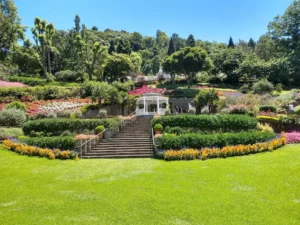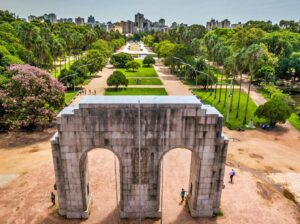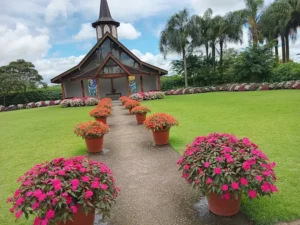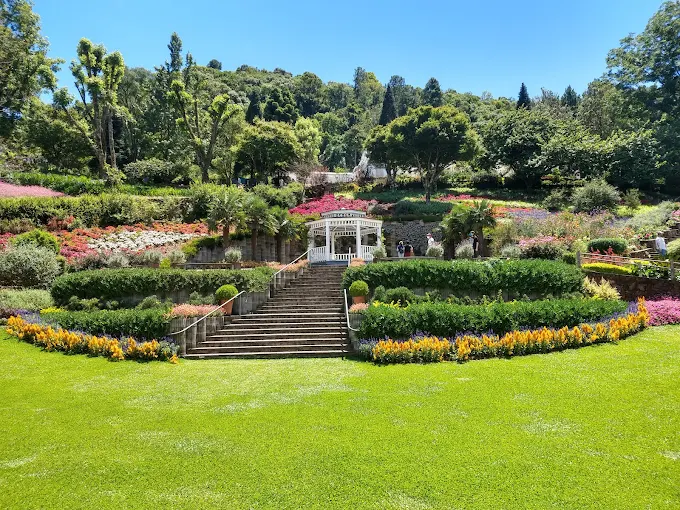The Sacred Art Museum of Pirenópolis, located in the heart of the city’s historic center, is an important cultural heritage site that preserves and showcases the rich religious and artistic history of colonial Brazil. Housed in a building of significant architectural importance, the museum is a true treasure for those interested in art, history, and the religiosity that shaped Brazilian culture, especially in Goiás.
History of the Sacred Art Museum
Founded in 1984, the Sacred Art Museum of Pirenópolis aims to preserve and promote the history of religious art in the state of Goiás. The city of Pirenópolis itself is of great historical relevance, with a heritage dating back to the colonial period. The museum is housed in the former São Francisco Convent, an 18th-century colonial building founded by Franciscans who played a key role in the evangelization of the region.
The museum emerged from the need to preserve the city’s historical treasures, including a collection of sacred art, religious furniture, liturgical garments, and other objects documenting the faith and devotion of the people of Goiás. Additionally, the museum serves as a space for reflection on the evolution of sacred art in Brazil, particularly during the 17th and 18th centuries, periods when Pirenópolis was an important religious and cultural center.
The Museum’s Collection
The Sacred Art Museum’s collection is a true journey through time, featuring pieces that tell the story of religiosity in colonial Brazil and the city of Pirenópolis. Among the most notable items are wooden sacred sculptures, many attributed to masters of Baroque art who worked in the region.
Baroque Sculptures
The sculptures in the museum’s collection are one of its main attractions. They reflect the exuberance of Brazilian Baroque art, featuring images of saints and biblical scenes created by artists who were often anonymous. Notable pieces include images of Our Lady of the Guide, Saint Francis of Assisi, and other important figures in Catholic religiosity.
These sculptures are rich in detail, with dramatic expressions and elements that reveal the devotion and faith of the artists of the time. Many of these artists worked in religious art workshops spread across Brazil, particularly in Minas Gerais, Bahia, and Goiás, and their works reflect the fusion of European influences with local culture.
Religious Furniture
In addition to sculptures, the museum also houses a valuable collection of religious furniture, including altars, chairs, benches, and liturgical objects. These items were used in religious ceremonies and serve as a testament to the importance of Catholic worship in the formation of the region’s identity.
The furniture exemplifies the skill of local artisans who combined native wood with European techniques to create beautiful and functional pieces. Some of these pieces feature incredibly fine details, demonstrating the artisans’ dedication to creating objects that served both religious and aesthetic purposes.
Paintings and Other Sacred Objects
The museum also features religious paintings dating from the colonial period. Many of these paintings depict scenes from the life of Christ, the Virgin Mary, and Catholic saints, always with a focus on popular religiosity.
Additionally, the museum displays liturgical garments, including vestments and robes used during ceremonies and masses. These items are important for understanding how religious practices were celebrated in colonial Brazil and how sacred art played a central role in these rituals.
The Museum’s Architecture
The Sacred Art Museum of Pirenópolis is housed in a colonial building of great historical value. The former São Francisco Convent, where the museum is located, features typical 18th-century religious architecture, with adobe walls, wooden windows, a gabled roof, and a simple yet imposing façade.
The museum’s interior is carefully organized to accommodate the collection, allowing visitors to appreciate each piece in detail. The environment provides a tranquil and reflective atmosphere, ideal for those wishing to delve into the study of sacred art and the religious history of Goiás.
The Museum and Pirenópolis’ Culture
The Sacred Art Museum is undoubtedly one of the most significant symbols of Pirenópolis’ culture. The city is known for its traditional festivals, such as the Cavalhada, which celebrates the battle between Moors and Christians, and its colonial architecture, which includes several historic churches. The presence of the museum reinforces Pirenópolis’ importance as a cultural center in Goiás and as a destination for tourists and scholars of art and colonial history.
The city, with its cobblestone streets and colonial houses, invites visitors to explore deep-rooted Brazilian traditions, religious heritage, and rich history. The museum, in addition to being a reference point for sacred art, serves as a link between the past and the present, illustrating how art and religiosity are intertwined in shaping the region’s cultural identity.
Visiting and Cultural Programming
The Sacred Art Museum is open to the public most of the year, except on certain holidays. It welcomes tourists from various parts of Brazil and the world, offering a welcoming and educational environment for those wishing to learn more about the history and religious art of Goiás.
In addition to its permanent exhibitions, the museum organizes cultural and educational events such as lectures, workshops, and temporary exhibitions, attracting both tourists and local residents. The Sacred Art Museum is, therefore, a dynamic and ever-evolving space that continually seeks to provide new ways to engage with art and history.
Conclusion
The Sacred Art Museum of Pirenópolis is one of Goiás’ main cultural destinations, offering a rich experience in sacred art and colonial Brazilian religiosity. Its collection of sculptures, paintings, furniture, and other sacred items is a true historical treasure, allowing visitors to better understand the history of sacred art and its role in shaping Goiás’ religious and cultural identity.
Visiting the museum is undoubtedly a unique opportunity to immerse oneself in the history of Pirenópolis and colonial Brazil while appreciating some of the most beautiful expressions of religious art. For those seeking to understand the cultural roots of Goiás and Brazil, the Sacred Art Museum is an indispensable place.

















